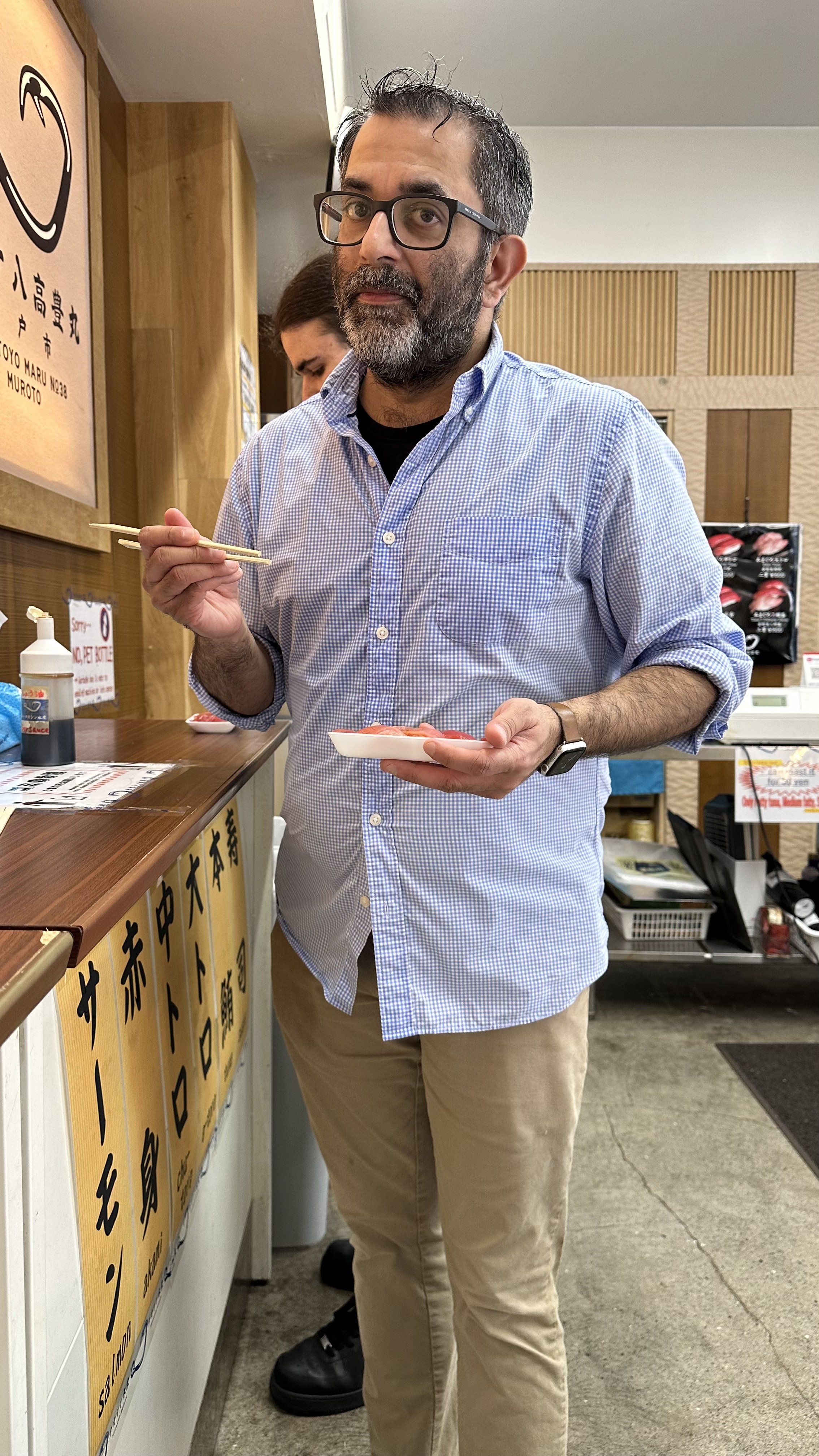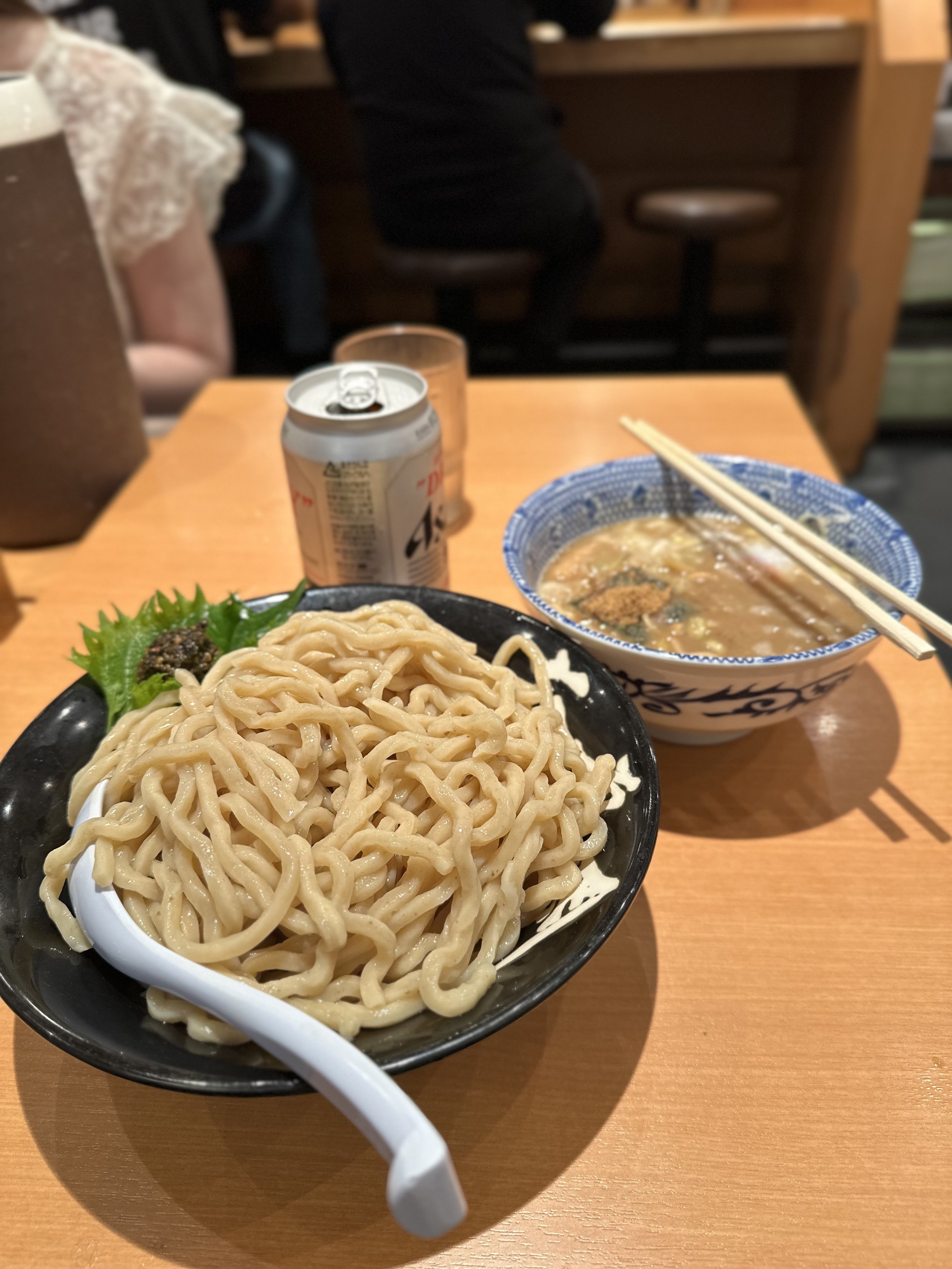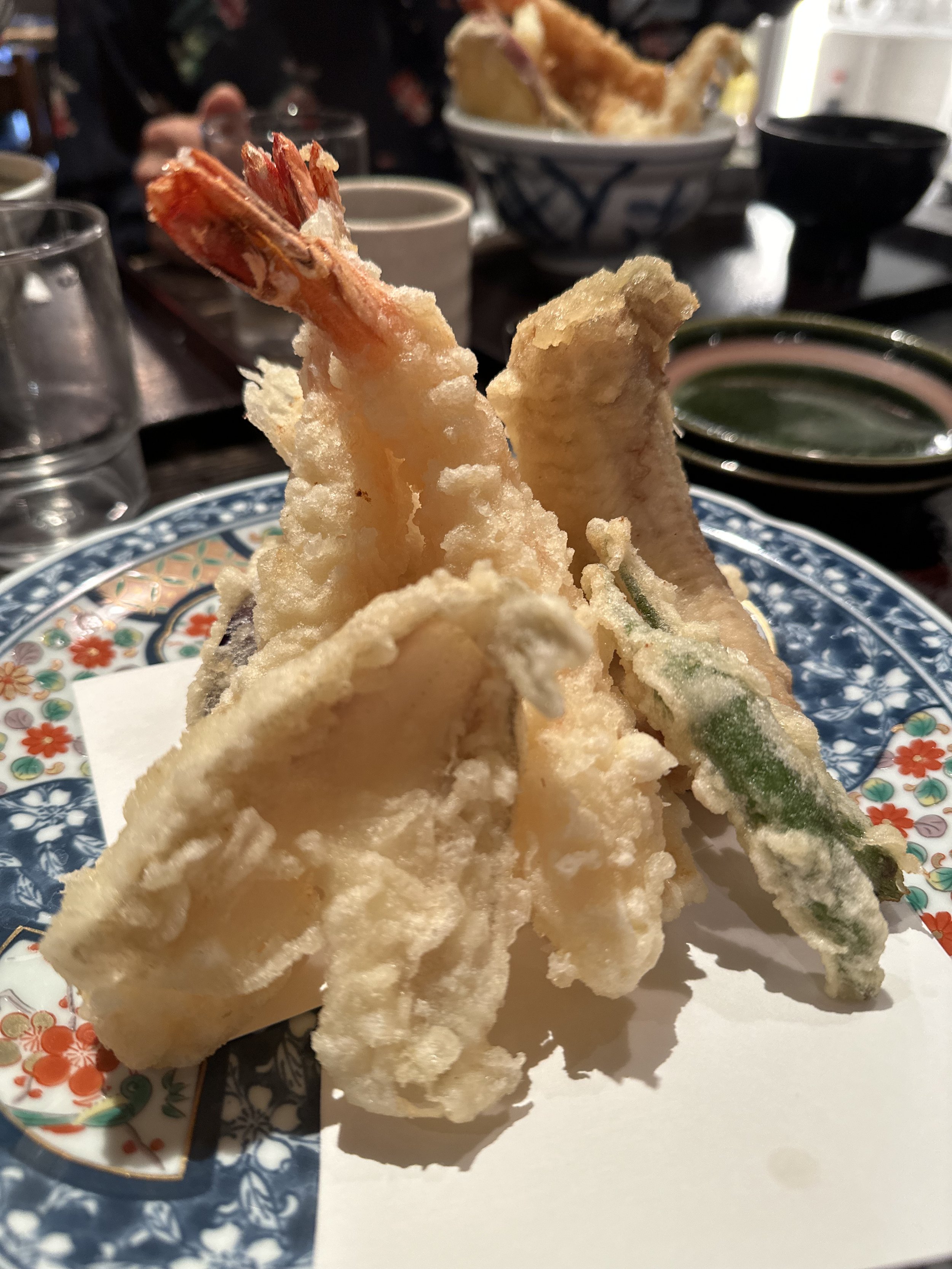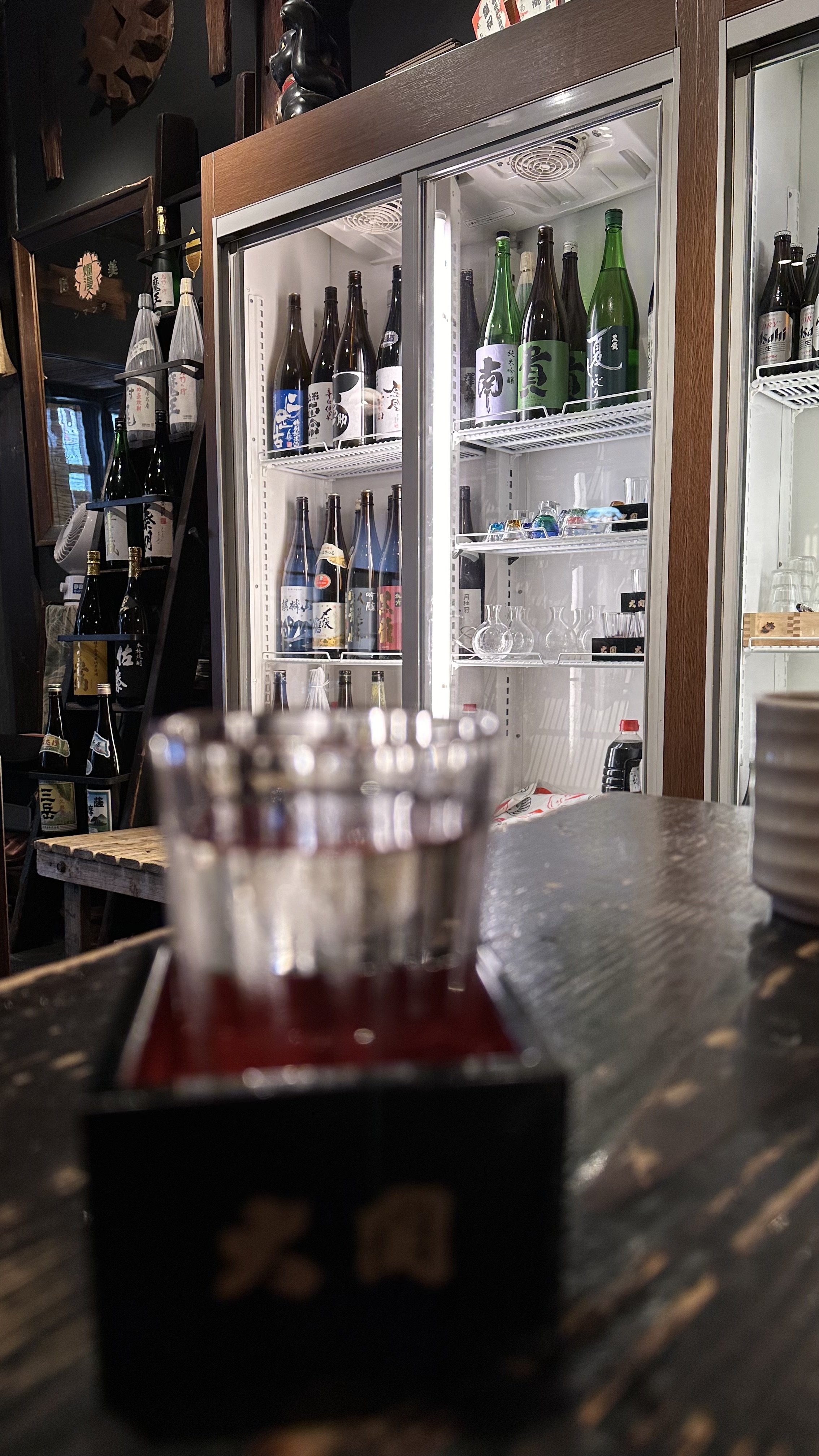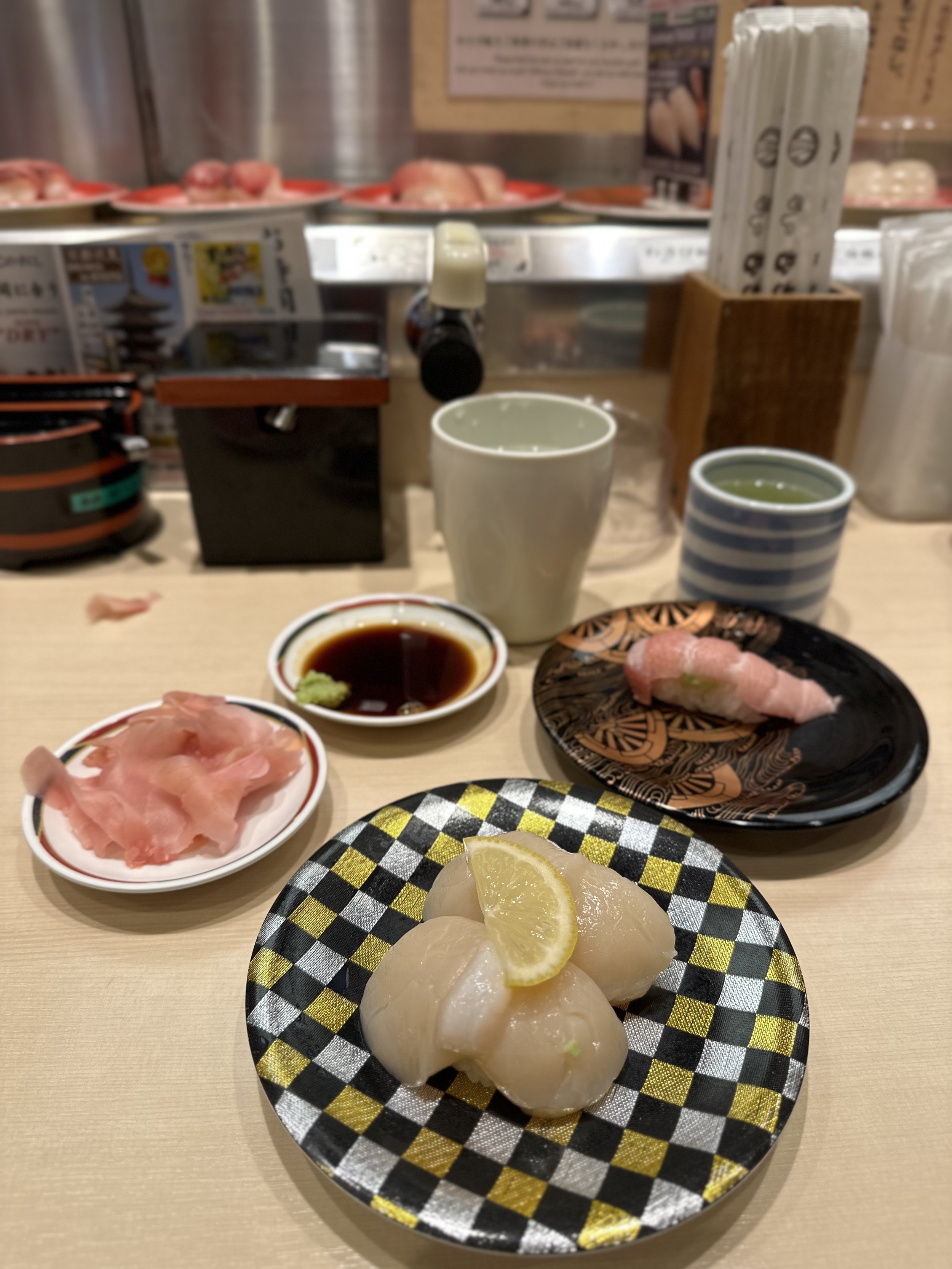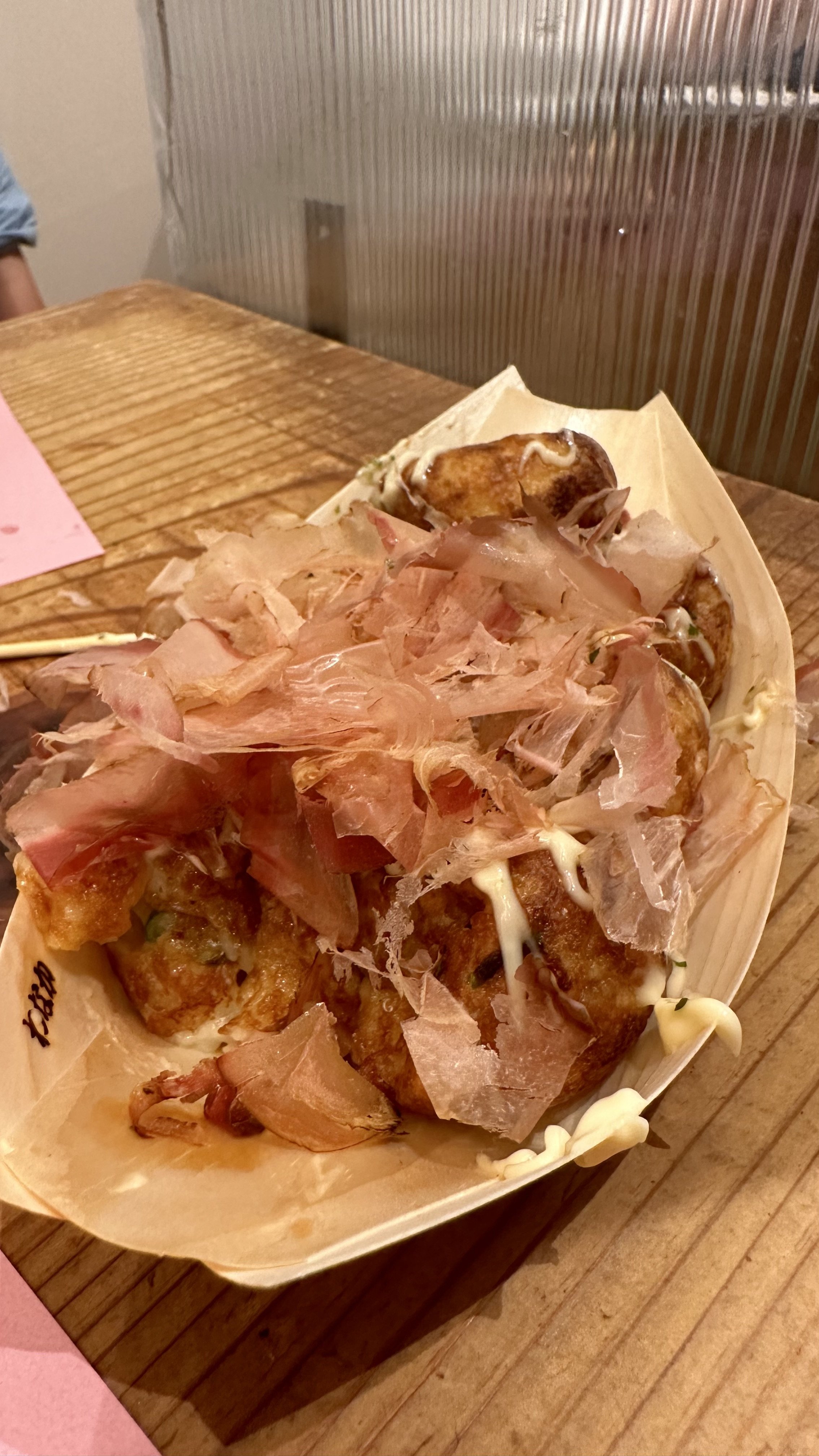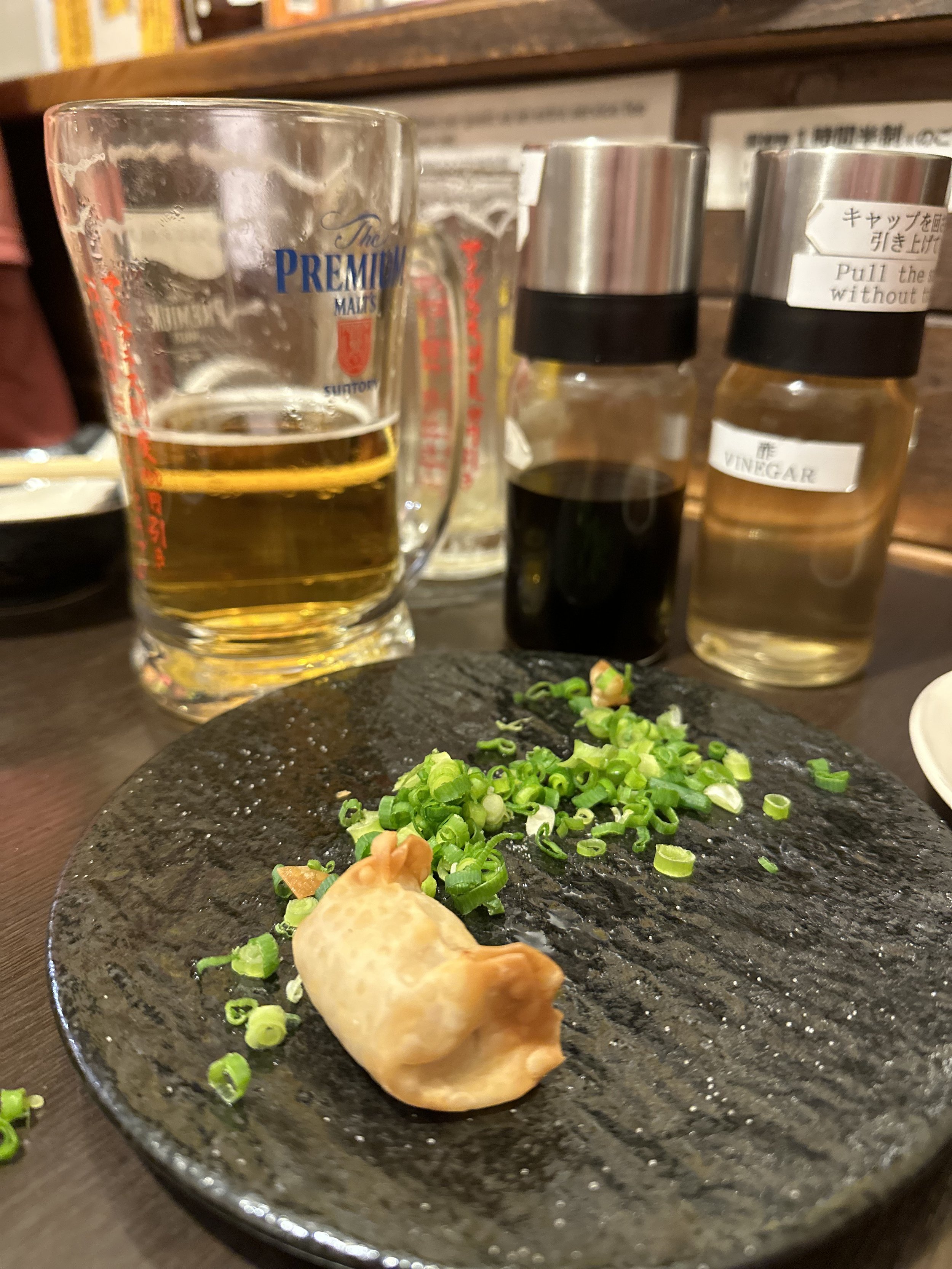Japan: Kobe, Otoro and other seriously good eats
I’ve wanted to visit Japan for as long as I can remember. Sure, Mount Fuji, breathtaking temples and bright lights were part of the attraction but the primary driver of my choice holiday of holiday destination is what I might eat when I get there. With Japan, the prospect of eating supremely fresh sushi at Tsukiji Market, Kobe beef in Kobe, silky ramen, a never ending sushi train, okonomiyaki made by someone who knows what they are doing. I could go on. (I will, keep reading).
Preparing to head to Japan I spent what seemed like hours on websites, scrolling Instagram reels and asking for recommendations of places to go and places to eat. Two recurring themes were that you are hard pressed to find bad food in Japan and that major train stations were oft a source of great food. Both of these would hold true during my trip.
Otoro at Tsukiji Fish Market
A drenched Ish at Tsukiji
Every time I saw a picture of someone eating at Tsukiji, my desire to visit Japan grew. Sure, the inner market, the working part where fishermen peddle their catch to restaurants each morning, with the best Tuna commanding a higher price than a second hand private jet, is now elsewhere in Tokyo. The ability to watch (more likely get in the way) of this sprawling market with nosebleed prices at 5am had gone, but not the ability to eat its prized result. Over the years, around the inner market, the exterior market had blossomed into small stalls selling plates of sushi to the public. They remain in place with fish direct from Toyosu (the new wholesale market) available sliced to perfection.
When Tsukiji day arrived on out trip, it was raining. Really raining. This was British chubby rain though set in a very un-British 20 degrees celsius. As the three of us emerged from Ginza metro station and began to walk to Tsukiji, the rain began to fall at its heaviest. Picture the sight; a 7 year old with a raincoat on, hood up but refusing to zip it up, questioning why we were going somewhere that only served fish when they don’t really like fish. (Circularly, like the fish that they like). A 17 year old with an umbrella wondering about their Father’s sanity. And me without a jacket or umbrella getting rained on. I didn’t care. It would dry off and I was off to Tsukiji. In my head, I was like a man in a Richard Curtis movie walking towards the fish of their dreams. In reality, I probably looked like a drowned rat.
Tsukiji is undeniably full of tourists. It appears on every tourist recommendation for Tokyo and for good reason. At lunchtime the restaurants and stalls are heaving with people. To get out of the rain we headed for the first stall away from the crowds to be greeted by a myriad of delights from the sea. First purchase, otoro, scallop and a giant oyster.
Eating otoro at Tsukiji was on my bucket list. Otoro is the prized fatty belly from a tuna. There’s very little of it on each fish despite their mammoth size. It’s dense, creamy and edges towards being a hybrid of fish and meat. Distinctly the former with attributes of the latter. Silence as 17 and I grinned from ear to ear, enjoying this prized cut. The scallop was sweet and plump. Its freshness undeniable. The oyster bigger than any I’d eaten before. In the second before I tipped it back, I worried it might be a challenge to chew but how wrong I was. Supple and full of ozone. I was satisfied and ready to find more.
After some assorted sashimi we found another stall selling the range of tuna from otoro to the ‘regular’ belly though there was nothing regular about this fantastically fresh fish.
We finished with a final plate of otoro and for me, a little sake. Because I could.
Kobe in Kobe
Pop to your local supermarket (not now, you’re reading this) and walk down the meat aisle. You’ll see the word wagyu within 30 seconds. What began around 20 years ago as a word we began to hear in the west, surrounded by myth of cows fed on beer, massaged and given access to the internet (they like amoosing videos), has morphed into a way of charging more for pieces of meat.
If you want to read more about wagyu and kobe, click here. In summary:
Wagyu style / Kobe style - meaningless marketing piffle. ‘Style’ is a meaningless appellation.
American/Australian/British wagyu - at best a cross breed of Japanese cattle and local cattle, but could be just local. There’s no definition that must be met, so again, you are likely paying for a label rather than quality.
Japanese wagyu - specific Japanese black cattle. Specific definition.
Kobe beef - a tiny subset of Japanese wagyu. The Tajima breed of Wagyu cattle, raised in Hygogo prefecture to exacting standards
A5 Kobe beef - the best of the best
As you might imagine, finding authentic wagyu and kobe beef in Japan is somewhat easier than outside of Japan. There’s no need to go to Kobe, but it was a short train ride away so off we went.
Sat at a counter with a tepanyaki grill emitting a feint heat, we settled on three different cuts to share. A Kobe rump steak, an A5 Wagyu sirloin and the showstopper, an A5 Kobe sirloin.
Before the main event, our chef began cooking the accompanying vegetables as we enjoyed a rich clear beef broth spiked with tiny pieces of beef.
Then the meat came, cut by cut. The Kobe rump first. Rump and Sirloin vie for my attention as my favourite steak cut in a restaurant. (At home it’s onglet or bavette). I wanted to try one of each in our mix of three. This was the delicious. As an A5 cut it was rich with both fat and flavour. The extra work the muscle does over sirloin, pronounced in flavour and texture.
Next the A5 Wagyu Sirloin. Not Kobe, but from Japanese Wagyu cattle and A5 - top quality - ideal firmness, texture, colouring and marbling. Soft, yielding, rich with fat in every bite. You couldn’t eat much of this, but each piece was a explosion of flavour.
Finally the best cut of the day. A5 Kobe Beef. Sublime. Though I note the gap between this and the A5 Japanese Wagyu was small. Would I have picked the difference without being told? I’d like to think so but I don’t know. I suppose I’ll just have to try more. My children agree. The youngest asked as we left “Dad, where can I get more of this Kobe beef?”
Dip noodles on Ramen Street in Tokyo
I remember my first bowl of ramen. It was the mid 1990s at the original Wagamamas near the British Museum. Long before it was a ubiquitous chain, when people queued to get in and the concept of food arriving when it was ready viewed as quirky and not disorganised, that first bowl of ramen was new, interesting, noice and unusual (I’ve been watching Kath and Kim repeats). Thirty years on and ramen is commonplace. A new generation of restaurants in the UK serve sturdy broths that stick to your ribs. What then would it be like in Tokyo? It was our first day, several hours from landing at Haneda and following a trip to the Pokemon store, we went in search of Ramen Street.
Deciding that for our first meal we’d follow the internet and visit the restaurant that had the most positive recommendations, we dutifully queued for a bowl of dip noodles. Here your choice of portion of cold Udon turned up with a thick, rich porcine broth that you dipped the Udon into. The Udon were chunky and al dente. The broth was the Guinness ramen broths. This would put hairs on your chest if consumed in sufficient quantities. None of us got anywhere near the end of our Udon or broth. Full and happy we left with a smile.
Tempura
Our first full day in Tokyo comprised a city tour with a private guide. For lunch, she took us to one of her favourite places for tempura. Thin, light batter that melted on contact, dipped in a salty dipping sauce. We ate vegetables, prawn, eel and local white fish with a smile. Plus a small glass of Sake for me.
Ekiben
Eating while walking around or on transport is a no-no in Japan with one notable exception: when on a Shinkansen. Here the Japanese turn the wheel hard the other way. Ekiben is a specific type of bento box on sale at Shinkansen stations for consumption on the train. They range from simple to really quite elaborate. My record here? Two boxes, one delicious filled with things I recognised and others I didn’t. One really challenging box of cold chicken yakitori; feet, cartilage and all. Choose your Ekiben wisely.
Sushi
I could have sat here all day. At one stage, I wondered if I could keep eating until my visa ran out. Plate after plate of the freshest fish and seafood, each as delicious as the one before and after. I ate more otoro, scallops and salmon. As the plates piled up, we noticed that mine were predominantly the expensive ones and my children had been more frugal. Still, the bill was exceptionally reasonable.
Okonomiyaki
‘The Jackson Pollock thing you make’ and I have been for some time. My recipe is not authentic but based on what I can get my hands on with ease in South East London. So what would the real deal taste like? On our first evening in Osaka we ventured out to a popular local spot and chosen from an extensive menu. Verdict? Each bite was lighter than the one I make at home but somehow overall, just as filling.
Takoyaki
The streetfood of Osaka. Little balls of batter filled with pieces of octopus, finished with a mayo, a tangy sauce and a scattering of bonito flakes that appear to dance from the heat of the balls. Ordered 6, could have eaten 60. Let’s face it, batter always tastes good but I was also impressed with the tender octopus inside each one.
Kushikatsu
Another Osakan favourite. Kushikatsu is almost anything, meat, fish or vegetable, battered and fried on a stick. Quite dense going; while a couple of these with a beer would be fine, a whole meal was just too much.
Katsu curry
We ordered on iPads, you could decide the heat of your curry sauce and there was a choice of pork or chicken. Everyone was happy. And full, very full. But happy full.
Gyoza
I lost track of how many we ordered. Why only one in the photo? Every time I got my phone out to take a picture, there was just one left.

